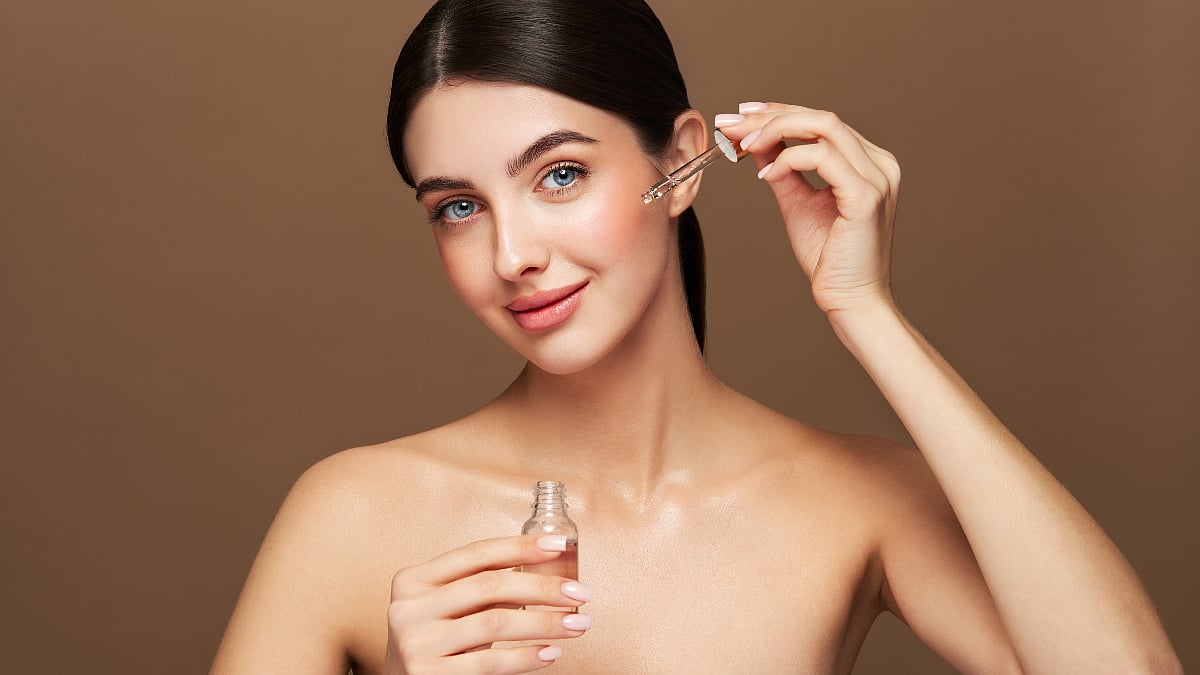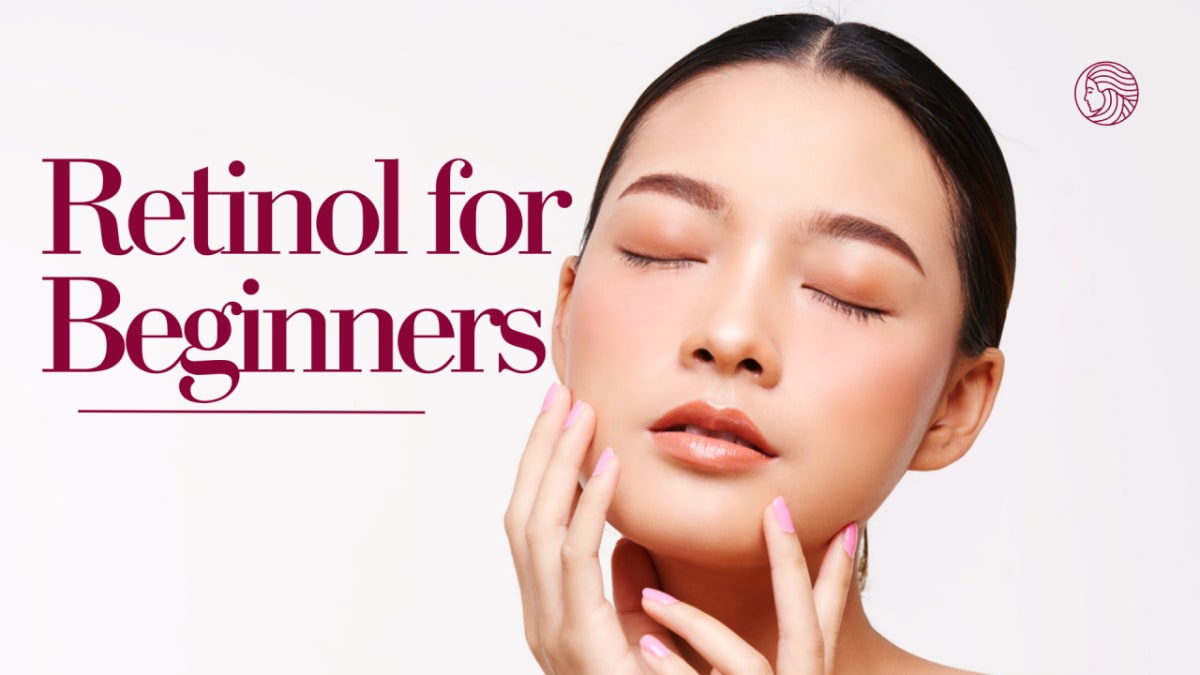Get Your AI Analysis
Personalized skincare insights
Discover your perfect skincare routine with our AI-powered analysis. Get personalized recommendations for glowing, healthy skin.
Start AnalysisFollow Us
Stay updated with the latest skincare tips, trends, and expert advice.
Retinol is the gold standard anti-aging ingredient—but it's also one of the most intimidating to start. If you're confused about percentages, worried about irritation, or scared of the dreaded "retinol purge," you're not alone.

This complete beginner's guide will walk you through everything you need to know to start retinol safely and effectively. You'll learn how to choose the right product, minimize side effects, and build up to powerful results without damaging your skin.
Let's make retinol your skincare superpower, not your nightmare.
What Is Retinol? (Retinol 101)
Retinol is a vitamin A derivative that transforms your skin at the cellular level. It's the most researched anti-aging ingredient in dermatology with over 40 years of clinical data backing its effectiveness.
How Retinol Works:
Speeds up cell turnover: Pushes dead cells off faster, revealing fresh skin
Boosts collagen: Thickens skin, reduces wrinkles
Unclogs pores: Prevents and treats acne
Fades hyperpigmentation: Evens skin tone
Improves texture: Smooths rough, bumpy skin
Retinoid Family Tree:
Understanding the strength hierarchy:
Prescription (strongest): Tretinoin (Retin-A), Adapalene (Differin), Tazarotene
Over-the-counter (moderate): Retinol, Retinaldehyde
Gentlest (beginner-friendly): Retinol esters (Retinyl Palmitate, Retinyl Acetate)
Benefits of Retinol: Why You Should Start

For Anti-Aging:
✅ Reduces fine lines and wrinkles (clinically proven)
✅ Firms sagging skin
✅ Thickens thinning skin
✅ Prevents future aging
For Acne:
✅ Unclogs pores deeply
✅ Reduces breakouts
✅ Fades acne scars
✅ Controls oil production
For Texture & Tone:
✅ Fades dark spots and melasma
✅ Smooths rough texture
✅ Brightens dull skin
✅ Minimizes pore appearance
Bottom line: Retinol is the closest thing we have to a "miracle ingredient" in skincare.
The Beginner's Retinol Roadmap (Step-by-Step)
Follow this exact protocol to start retinol without irritation:
Step 1: Choose Your Starting Strength (Weeks 1-4)
First-time users:
0.25% - 0.3% retinol OR retinol esters
Use 1-2x per week
Buffer with moisturizer (apply moisturizer first, then retinol)
After 4 weeks with no irritation:
Increase to 3x per week
Stop buffering
Step 2: Increase Frequency (Weeks 5-8)
Once your skin tolerates 3x per week:
Move to every other night
Continue monitoring for irritation
Keep moisturizer nearby to buffer if needed
Step 3: Go Nightly (Weeks 9-12)
If your skin is happy:
Use retinol every night
Maintain this for 3 months minimum before increasing strength
Step 4: Level Up Strength (Month 4+)
After 3 months of nightly 0.25-0.3% use:
Upgrade to 0.5% retinol
Start at 2-3x per week again
Build back up to nightly over 4-6 weeks
Maximum OTC strength: 1% retinol (only after 6+ months of consistent use)
How to Apply Retinol Correctly
Application technique matters as much as the product itself.
The Perfect Retinol Routine (Night Only):
Cleanse: Gently wash your face
Wait 10-15 minutes: Let skin dry completely (wet skin = more irritation)
Apply retinol: Pea-sized amount for entire face
Wait 10 minutes: Let it absorb
Moisturize: Apply thick, barrier-supporting moisturizer
Optional: Slug with Vaseline (helps minimize irritation)
Application Tips:
❌ Don't apply to wet skin
❌ Don't use near eyes unless it's eye-specific retinol
❌ Don't mix with vitamin C, AHAs, or BHAs initially
✅ Do use sunscreen religiously in the AM (SPF 30+)
✅ Do be patient—results take 12+ weeks
Best Retinol Products for Beginners
Best Beginner Retinols (0.25-0.3%)
1. CeraVe Resurfacing Retinol Serum
Price: ~$18
View on Amazon
Encapsulated retinol for gentleness
Ceramides + niacinamide
Best for: Sensitive skin, first-timers
2. The Ordinary Retinol 0.2% in Squalane
Price: ~$6
View on Amazon
Ultra-affordable
Squalane base = moisturizing
Best for: Budget beginners
3. Paula's Choice 0.3% Retinol + 2% Bakuchiol
Price: ~$58
View on Amazon
Combines retinol with gentler bakuchiol
Peptides + antioxidants
Best for: Anti-aging focus, mature skin
Best Mid-Strength Retinols (0.5-1%)
4. Neutrogena Rapid Wrinkle Repair Retinol Oil
Price: ~$20
View on Amazon
0.5% retinol
Accelerated delivery system
Best for: Intermediate users, faster results
5. Differin Gel (Adapalene 0.1%)
Price: ~$15
View on Amazon
Technically a prescription-strength retinoid
Now available OTC
Best for: Acne-prone skin, stubborn breakouts
Managing Side Effects: The Retinol Adjustment Period
Most people experience some adjustment symptoms. Here's what to expect and how to handle them:
Common Side Effects (Weeks 1-6):
Dryness and flaking
Mild redness
Tightness
Increased sensitivity
Mild burning sensation (should subside quickly)
The Retinol Purge (Weeks 2-6):
Your skin may temporarily break out more as retinol speeds up cell turnover and brings underlying congestion to the surface.
Purge vs. Breakout:
Purge (normal): Happens in areas you usually break out, clears within 4-8 weeks
Reaction (bad): New breakouts in unusual areas, doesn't improve after 8 weeks
How to Minimize Side Effects:
✅ Start low, go slow
✅ Buffer with moisturizer
✅ Use every other night instead of nightly
✅ Apply to completely dry skin
✅ Use a gentle, hydrating cleanser
✅ Layer on barrier repair moisturizer
✅ Avoid other actives during adjustment
When to Stop (Red Flags):
❌ Severe burning or stinging
❌ Raw, bleeding skin
❌ Severe swelling
❌ Rash or hives
If you experience these, stop immediately and see a dermatologist.
Retinol Rules: Do's and Don'ts
DO:
✅ Wear SPF 30+ daily (non-negotiable!)
✅ Use at night only
✅ Store in cool, dark place (retinol degrades in light/heat)
✅ Moisturize heavily
✅ Be patient (results take 12+ weeks)
✅ Consider skin cycling to balance actives with recovery
DON'T:
❌ Use during pregnancy or breastfeeding
❌ Mix with AHA/BHA on same night (initially)
❌ Use vitamin C at the same time (separate AM/PM)
❌ Over-exfoliate
❌ Get waxing on areas using retinol
❌ Skip sunscreen
Retinol + Other Actives: What Can You Combine?
Once your skin tolerates retinol (after 3+ months):
Safe Combinations:
✅ Niacinamide (reduces retinol irritation)
✅ Hyaluronic acid (hydrates)
✅ Ceramides (repairs barrier)
✅ Peptides (boosts anti-aging)
Advanced Combinations (after 6+ months):
✅ Vitamin C in AM, retinol in PM
✅ AHA/BHA 2-3x per week, retinol on alternate nights
✅ Azelaic acid (can sometimes use together)
Timeline: When You'll See Results
Realistic expectations for retinol results:
Week 1-2: Possible flaking, dryness (adjustment period)
Week 2-6: Possible purging (if acne-prone)
Week 6-8: Skin adjusts, side effects calm down
Week 8-12: First improvements—smoother texture, brighter tone
Month 3-6: Fine lines soften, pores refine
Month 6-12: Significant anti-aging results, collagen boost
Key takeaway: Retinol is a marathon, not a sprint. Consistency over 6-12 months = life-changing results.
Retinol for Different Skin Types
For Dry/Sensitive Skin:
Start with 0.25% encapsulated retinol
Buffer with moisturizer
Use 1-2x per week maximum initially
Focus on barrier repair products
For Oily/Acne-Prone Skin:
Can start with slightly higher strength (0.3-0.5%)
Consider adapalene (Differin) for acne
Still moisturize! Retinol dries out all skin types
For Mature/Aging Skin:
May tolerate higher strengths faster
Pair with peptides and antioxidants
Consider prescription tretinoin after 6 months OTC retinol
For Combination Skin:
Apply retinol all over
Use lighter moisturizer on T-zone, heavier on cheeks
Standard progression (0.25% → 0.5% → 1%)
Retinol vs. Tretinoin: Should You Upgrade?
After 6-12 months of consistent OTC retinol use, you might consider prescription tretinoin (Retin-A):
Tretinoin Advantages:
✅ 10-20x more potent than retinol
✅ Faster, more dramatic results
✅ Gold standard for anti-aging and acne
✅ More research backing
Why Start with Retinol First:
✅ Build tolerance gradually
✅ Less irritation risk
✅ No prescription needed
✅ Easier to access
Best approach: Master OTC retinol first, then talk to a dermatologist about tretinoin if you want more powerful results.
Get Personalized Retinol Recommendations
Not sure which retinol product or strength is right for your skin? Our AI Skin Analysis can create a custom retinol roadmap based on your skin type, concerns, and experience level.

